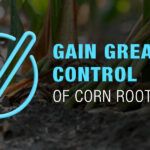Essential Soybean Harvest Tips Help Maximize Yields
Practical tips help reduce soybean harvest losses due to shattering, lodging and green stem syndrome.

You’ve spent the season protecting your soybean yield potential, and it’s finally time to reap the rewards of your hard work. To get more grain into the combine where it belongs, you need to anticipate and adapt to field conditions and late-season issues. We’re breaking down the most frustrating complications and sharing soybean harvest best practices to help reduce losses.
Shattering Loss in Soybeans
Shattering occurs when farm equipment breaks open pods and drops loose beans before they enter the combine. According to Michigan State University Extension, drought during the growing season or repeated cycles of wetting and drying after pods begin to mature can worsen shattering losses. Insect damage can also make pods brittle and worsen losses. Here are some tips to consider to prevent soybean shattering during harvest:
- The best time to harvest soybeans is when pods reach 15% moisture. As moisture levels get closer to 10%-11%, shattering risk increases significantly.
- If some fields are already very dry, consider blending loads of high- and low-moisture beans to reach an average moisture level closer to 13%.
- Harvest early in the morning and late in the evening to allow soybeans to regain some moisture.
- Keep an eye on the weather and try to harvest before mature plants are subjected to repeated wetting and drying cycles.
- Reduce the reel speed relative to ground speed if you notice shattering pods.
Lodging and Short Plants
Like corn, lodging in soybeans occurs when plants can no longer support their weight, often due to severe wind or excessive rainfall or irrigation throughout the season. Harvest equipment often misses lodged soybeans because the cutter passes right over the stems.
Similarly, shorter-than-average plants can contribute to stubble loss, because the cutter either misses them entirely or splits low-hanging pods. Both lodged and short plants are more difficult to get into the combine.
Managing Green Stem Syndrome
Green stem syndrome refers to plants that maintain moisture in the stems and leaves even after pods have dried down to appropriate harvest levels. Though it doesn’t affect yield potential directly, green stem syndrome can make harvest more difficult.
The best combine settings to reduce soybean loss will vary depending on the specific conditions in your fields. For both lodged soybeans and green stem syndrome, consider the following best practices:
- Harvest at a 20°-25° angle to feed stems into the combine more evenly.
- Slow down and recalibrate your equipment if necessary. You may decrease your ground speed to as slow as 2-3.5 miles per hour.
- Maintain the reel speed at 10%-25% faster than ground speed.
-
- Here’s a hint: If the cutter is riding over lodged plants, decrease your ground speed. If you see shattering, decrease your reel speed.
- Lower the cutter bar and install crop lifters.
- Make sure the separating equipment is in good condition; otherwise, green or tough stems can cause losses.
- If plants are severely lodged in one direction, take the time to harvest in the opposite direction.
- If pods are dry, don’t wait for stems to dry down before harvesting.
The wrong combine settings can cause machine losses even without additional challenges like lodging and green stem syndrome. These include gathering unit, cylinder and separation losses due to incorrectly adjusted equipment. If you see an unusual number of soybeans lost in a line under the machine, your equipment probably needs troubleshooting.
When adjusting your equipment, make one change at a time to fine-tune your settings and contact your equipment manufacturer for specific recommendations.
2 Min Read
- Know the top three soybean harvest concerns: shattering, lodging and green stem syndrome.
- Begin harvesting when soybeans reach 15% moisture to reduce shattering losses.
- Adjust equipment and harvest carefully to salvage lodged soybeans and low pods.


















